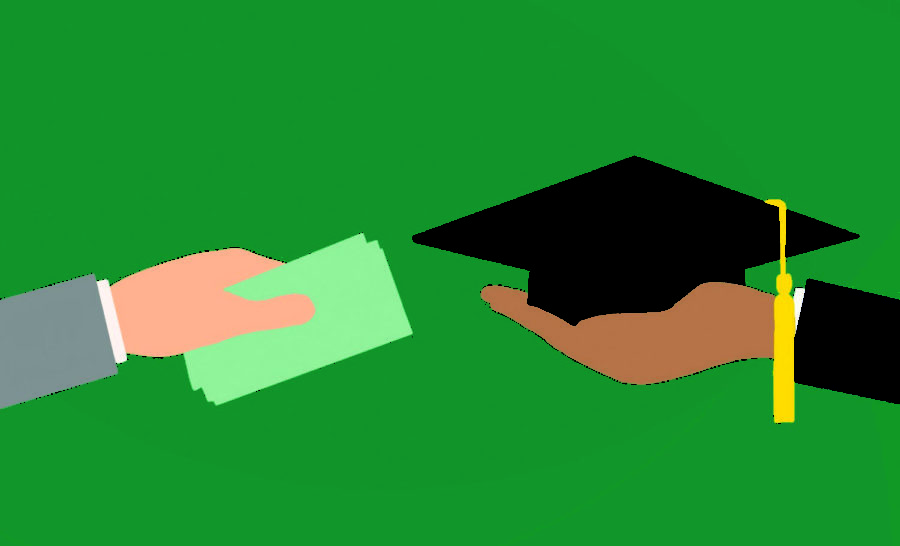Disappearing debts
New plan to forgive student loans has been ordered
Photo by Anna Haley
The government issued an order that will forgive up to $10,000 of student loans debts. This aid will help many still struggling to pay off their debts.
November 5, 2022
After countless all-nighters, stressful exam days and managing a new way of life, students are finally handed a diploma that suddenly turns them loose into the real world. All is well until they realize the tens of thousands of dollars of debt they accumulated. It’s going to take years to pay off all the loans—or so they thought.
In August 2022, the Biden administration announced a plan to forgive up to $10,000 of student loans for Americans earning less than $125,000 per year, and more recently, promised up to $20,000 forgiven for Pell Grant recipients.
“I’m being affected by [the order] because I do have a large amount of debt still leftover from college, about $18,000, mostly because COVID froze everything,” world geography teacher Christopher Foster said. “And I just really haven’t started up those payments again because it’s one less thing. I do fall into the range of where I could have most, if not possibly all, of my loans forgiven.”
To some, ten thousand dollars may not seem like much, but the forgiveness act can drastically shorten the length of monthly payments and change the life of the person who took out the loan.
“It would’ve taken me 11 years at $150 a month to just pay [$18,000,” Foster said. “But my circumstances are different because a disease came out of nowhere and knocked everybody out.”
Before the act, the burden of loans held back people from important steps in their lives.
“The cost of college delayed my purchasing a home for the first time. It has also prevented me from continuing to go further in my education,” science teacher Michael Folse said. “When I look at how much I have already accumulated in student loan debt, especially at the graduate level, I am hesitant to add to that total.”
Because of loans, many had to make important career decisions that would allow them to fulfill their goals. This change in the path made their experience easier.
“I didn’t start a master’s degree program because I was still under loans, but when I came to TISD, they paid for my master’s degree because I was a STEM teacher,” English teacher Kelsey Rankin said. “Making the choice to come here because it’s a title one school and because they offered that free master’s degree kind of changed my path.”
The loan freeze due to COVID has somewhat helped maintain a steady income, but before that, debt took away a large part of earnings.
“Before the loan payment freeze in the spring of 2020, I was paying, on average, $450 a month in student loans,” Folse said. “That is a large chunk out of my paycheck each month, which prevented me from growing my retirement and savings account.”
On top of loans, teachers often spend money from their own earnings to create a welcoming environment in their classrooms.
“The only tax break that I get is $250 tax credit a year, and I easily spend $750 to $1,000 in my classroom and my own money every single year,” Rankin said. “So taking that into account, college or the loan forgiveness should probably be greater for teachers since we spend so much out of our own pockets to make school function.”
There could be a dramatic increase in the amount of teachers and other important jobs that people may not take based on pay.
“It can be very difficult to be able to afford certain things like houses, especially if you’re single. It’d be awesome to have more deals or have a better system for teaching,” Foster said. “[If loans were cheaper], then there would be more people wanting to be teachers for the right reasons, not just for the summer vacation. So I think we could see an influx in more teachers, which is something we need.”
The act has been passed, but it has not been set in motion just yet.
“The application for loan forgiveness has not been released by the federal government yet,” Folse said. “It simply reduces the amount of time I will have to make payments, so even after loan forgiveness is granted, I will still be responsible for making payments to continue reducing debt.”
















